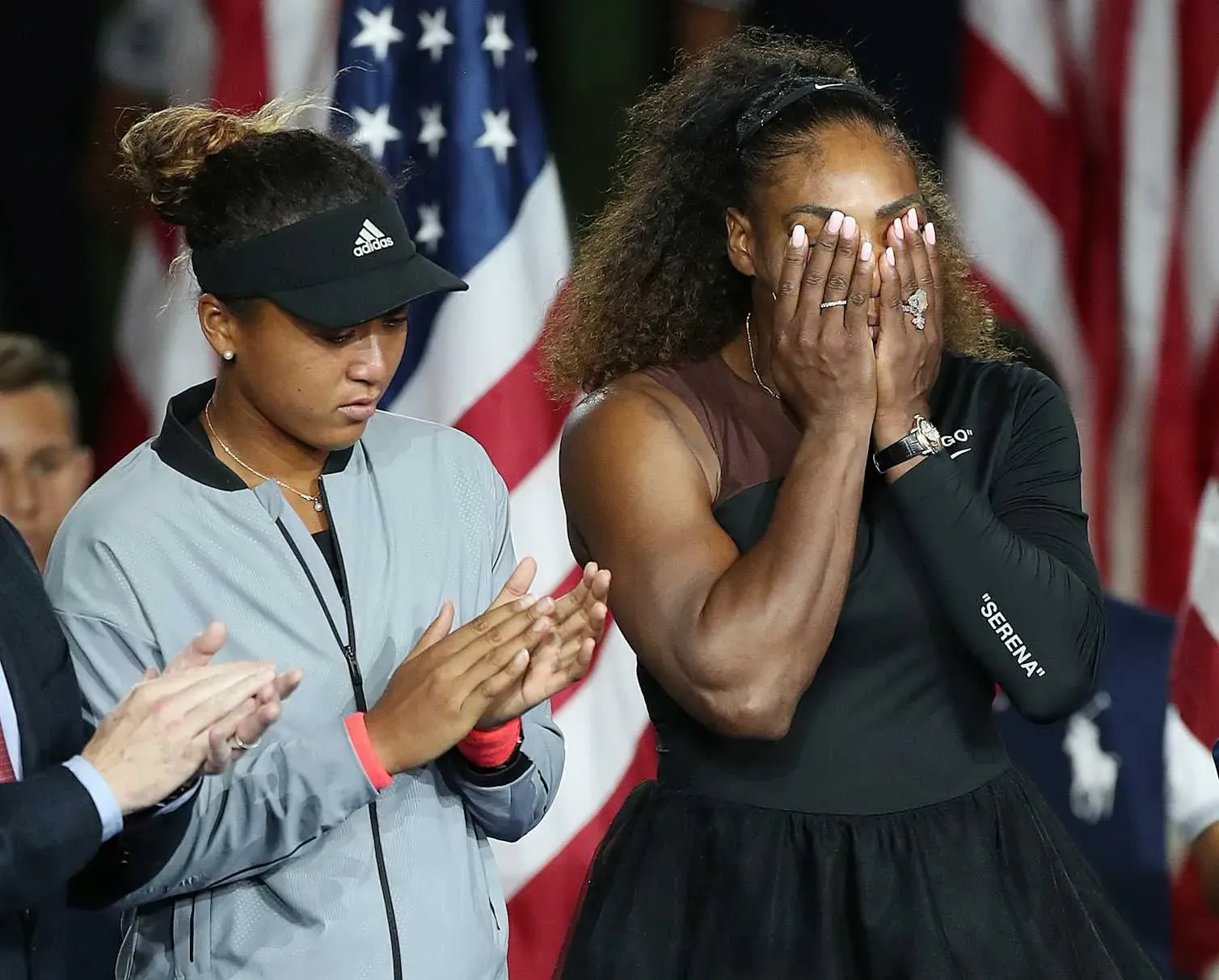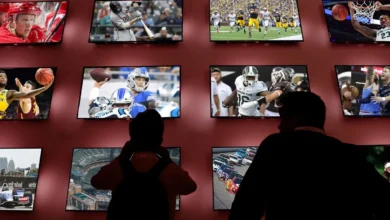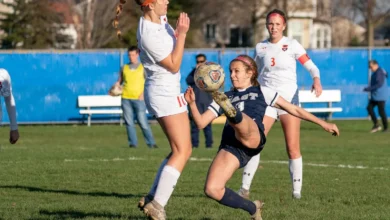Women in Sports Double Standards: The Ongoing Fight for Equality

Women in sports double standards remain a significant issue, as female athletes continually grapple with outdated expectations that dictate how they should behave on the field. Despite the monumental achievements of stars like Caitlin Clark, who broke the NCAA Division I basketball scoring record, female athletes often face disproportionate scrutiny compared to their male counterparts. While strides toward gender equality in sports have been made, the lingering effects of double standards reveal themselves in various forms, from public criticisms of competitive behavior to challenges in securing equal representation in media coverage. Women’s basketball issues have highlighted how societal views on femininity and competition clash, creating barriers that prevent female athletes from being fully accepted in their roles. The legacy of Title IX has certainly expanded opportunities, yet the need to address these persistent inequities is more urgent than ever as the sports world continues to evolve.
The ongoing disparities faced by women in athletics underscore the pressing need to confront the societal norms that perpetuate gender bias in sports. Female competitors, despite being immensely talented and dedicated, often find themselves ensnared in a web of double standards that dictate acceptable conduct on and off the field. Events like the recent Caitlin Clark sports controversy illuminate how public perception can drastically differ based on gender, showcasing a troubling tendency to judge women more harshly for acts of confidence or emotional expression. The evolution of women’s sports, bolstered by legislative breakthroughs such as Title IX, has opened doors for female athletes, yet ingrained attitudes towards competitiveness and decorum pose significant obstacles. As discussions around gender equality in sports gain momentum, it is vital to recognize and dismantle these biases to create a level playing field for all athletes.
The Persistent Double Standards in Women’s Sports
Despite the considerable progress made in women’s sports over the last few decades, double standards continue to be a roadblock for female athletes striving for equality. When women engage in competitive behaviors that are celebrated in their male counterparts, they risk facing public backlash and criticism. This hypocrisy not only undermines the achievements of female athletes but also perpetuates harmful stereotypes, reinforcing the notion that women must act ‘nice’ or ‘classy’ in every situation. Such expectations create a culture where women are not permitted to express their competitive spirit or showcase their emotions freely.
The recent incidents involving prominent athletes like Caitlin Clark have highlighted these discrepancies clear as day. While Clark’s on-court achievements and fierce spirit garnered admiration, Angel Reese’s triumphal gestures after winning the championship sparked a storm of disapproval that would likely have gone unnoticed had she been a male athlete. This unfair treatment ties directly into the broader narrative surrounding gender equality in sports, as female athletes continue to fight against societal norms that dictate how they should behave, ultimately stifling their potential.
Caitlin Clark and the Scrutiny of Female Athletes
Caitlin Clark’s rise in the sports world epitomizes the successes and challenges faced by female athletes today. As the first woman to break long-standing records in NCAA Division I basketball, her performance and charisma have transformed the landscape of women’s basketball. However, her accomplishments come at a cost. The scrutiny of her actions, including any sign of passion or emotion on the court, reveals the persistent gender biases that plague women in sports. Male athletes frequently express unfiltered emotions—whether through celebrations, trash-talking, or intense rivalries—without facing the same level of critique.
Such reactions towards Clark are reminiscent of historical biases against women, where assertiveness was often misconstrued as aggression. In this context, it’s vital to consider Title IX’s impact, which has provided female athletes with greater opportunities yet has simultaneously highlighted the disparities they face. The contrasting perceptions of Clark and Reese’s on-field behaviors exemplify the double standards rooted in outdated societal expectations, perpetuating the notion that women must dress and act in a certain way to be accepted in sports.
Gender Equality in Sports: The Ongoing Fight
The quest for gender equality in sports inherently ties into the broader movement for women’s rights and societal acceptance. Title IX has been a pivotal force in creating a more equitable playing field, yet the fight is far from over. With rising instances of backlash against female athletes who defy conventional norms, it is evident that systemic issues are still at play, impacting the way women’s sports are perceived and how female athletes are treated. Activism and advocacy have continued to grow, as communities rally to support female athletes striving for justice and equality.
The ongoing debate surrounding the participation of transgender women in sports further complicates the fight for women’s equality, as arguments for ‘protection’ often hinge on outdated views of femininity and fragility. This rhetoric not only undermines the very experiences of female athletes but also detracts from the strides made toward inclusivity and understanding in sports. As advocates continue to push for equitable policies and practices, it is crucial to dismantle the embedded stereotypes that keep women athletes constrained and marginalize their voices in the sporting landscape.
Title IX: A Catalyst for Change
Title IX has been hailed as one of the most significant pieces of legislation for women in sports, promoting gender equality and providing female athletes with opportunities that were previously denied. This landmark law has opened doors for countless female athletes, allowing them to compete at higher levels and gain visibility in a space that had long been dominated by men. Schools and universities across the country have benefited from Title IX, receiving funding to support women’s sports programs and encouraging female student participation in athletics.
The debate surrounding Title IX remains a hot topic, especially as new challenges to its efficacy emerge. The backlash against women’s sports and the insistence on maintaining certain gender norms have made it clear that the fight for equality in athletics is ongoing. As advocates work tirelessly to safeguard and improve upon Title IX, the importance of acknowledging the achievements of female athletes like Caitlin Clark and A’ja Wilson cannot be overstated; they are the embodiment of the progress achieved through this vital legislation.
Reclaiming Women’s Power in Sports
The narrative surrounding women in sports must evolve to reflect the strength and determination inherent in female athletes. Reclaiming power involves challenging the historical and ongoing double standards that dictate how women should behave on and off the field. As women athletes continue to shatter records and redefine standards of competitiveness, their stories deserve to be celebrated rather than scrutinized. Challenging outdated ideologies not only empowers female athletes but also encourages future generations to pursue their athletic dreams unabashedly.
Athletes like Angel Reese and Caitlin Clark exemplify the new wave of fierce competitors who refuse to be constrained by society’s expectations. Their success signifies a significant cultural shift, where young athletes are encouraged to embody strength, resilience, and authenticity without the fear of judgment. The fight against double standards in women’s sports is about more than individual success; it is about transforming the collective narrative around female athletes, ensuring they are not only accepted but celebrated for their contributions to sports.
The Media’s Role in Women’s Sports Discourse
The media plays a crucial role in shaping public perception of women in sports. Coverage that reinforces stereotypes or emphasizes negative incidents can perpetuate existing double standards, skewing audience perceptions of what it means to be a female athlete. Instances like the criticism faced by Angel Reese following her celebratory gestures highlight how the media often focuses on the actions of women in sports in a way that it would not for their male counterparts. This imbalance can discourage young women from expressing their competitive spirits and thriving in a space that celebrates athleticism.
Additionally, the portrayal of female athletes in sports media influences sponsorship opportunities, viewership, and overall support for women’s sports programs. By prioritizing narratives that uplift and empower female athletes—whether through recognizing their achievements, addressing issues of inequality, or providing critiques of double standards—media outlets can play a transformative role in the ongoing fight for gender equality in sports. Advocates and female athletes must continue to call for fair and balanced coverage to ensure the contributions and successes of women are acknowledged and appreciated.
Understanding the Impact of Cultural Norms
Cultural norms significantly impact how women athletes are perceived and treated in competitive sports settings. The traditional expectations of women’s behavior—rooted in outdated ideologies of femininity—often clash with the assertiveness required for athletic success. As a result, female athletes find themselves navigating a complex terrain where their capabilities are consistently overshadowed by societal expectations of decorum and modesty. These norms not only limit their expression but also influence how their actions are interpreted by the audience.
Challenging these entrenched cultural perceptions is essential for advancing women’s sports. By encouraging a more inclusive understanding of athleticism that embraces emotional expression and competitive spirit, society can begin to shift the narrative surrounding women in sports. Recognition of the diverse ways in which female athletes embody strength will ultimately work toward dismantling harmful stereotypes, fostering an environment where women can pursue their passions without the burden of societal expectations.
The Future of Women in Sports
The future of women in sports hinges on continued advocacy and the dismantling of existing double standards that stifle female athletes. As more women step into visibility through performance, activism, and leadership, the landscape of women’s sports is poised for transformation. The collective efforts of female athletes, advocates, and supporters can create a momentum that empowers women to break barriers, challenge stereotypes, and redefine success in sports.
With increasing visibility and support, the potential for growth in women’s sports is immense. However, this opportunity will not be realized without addressing the systemic issues that persist. Dismissing harmful stereotypes surrounding female athletes, galvanizing communities to support women in sports, and advocating for policy improvements can create a robust environment where female athletes thrive and perform at their best. The future is bright for women athletes; their fight for equality and recognition must continue relentlessly.
Frequently Asked Questions
What are the primary double standards women face in sports compared to male athletes?
Women in sports experience significant double standards, such as being criticized for showing emotion or competitiveness. For instance, while male athletes are often praised for their trash-talking and intense play, female athletes like Caitlin Clark or Angel Reese face backlash for similar behavior. This highlights the ongoing challenges of gender equality in sports, where women must navigate outdated expectations.
How has Title IX impacted female athletes and addressed issues of double standards in sports?
Title IX has been instrumental in enhancing opportunities for female athletes, fostering a more equitable environment in sports. However, despite these advancements, women still encounter double standards, such as scrutinized behavior on and off the field. The law’s impact has encouraged more participation, yet the societal perception and treatment of female athletes remain a barrier to complete gender equality in sports.
What role does media play in perpetuating double standards faced by women in sports?
Media coverage often reinforces double standards by framing female athletes’ actions differently than those of their male counterparts. Instances like the Caitlin Clark sports controversy exemplify how women’s achievements in sports are overshadowed by discussions around their emotional displays or behavior, suggesting that media narratives must evolve to support a more equal portrayal of female athletes.
How do cultural perceptions of femininity affect women in sports?
Cultural perceptions of femininity impose restrictive norms on women in sports, often labeling assertive behavior as inappropriate. Female athletes are frequently pressured to portray a ‘nice’ image, contrasting with the accepted intensity of male sports. This cultural bias limits the potential of athletes like Angel Reese and underscores the need for greater acceptance of competitiveness among women in sports.
What challenges do Black female athletes face in relation to double standards in sports?
Black female athletes, like Angel Reese, face unique challenges related to double standards, which often involve harsher scrutiny and criticism for expressing emotion or confidence. This differential treatment reinforces social stereotypes and expectations about behavior, placing additional pressure on these athletes to conform to conventional notions of femininity, further complicating their experience in the sports arena.
In what ways can we advocate for greater gender equality in sports?
Advocating for greater gender equality in sports involves promoting equitable media representation, supporting female-led initiatives, and enhancing visibility for women’s sports. Encouraging inclusive dialogues that highlight the achievements of female athletes, addressing double standards, and ensuring equal resources and opportunities for women in sports are vital steps towards fostering a more balanced athletic landscape.
| Aspect | Key Points |
|---|---|
| Historical Exclusion | Women were historically excluded from competitive sports, seen as unsuitable for the ‘wild excitement’ of competition. |
| Cultural Expectations | Exposure to sports has traditionally been limited for women, with expectations to remain ‘ladylike’. |
| Breakthrough Achievements | Caitlin Clark broke NCAA scoring records, representing significant progress in women’s sports. |
| Impact of Title IX | Title IX expanded opportunities for women in sports, but many challenges remain. |
| Double Standards | Female athletes face criticism for expressions of competitiveness and emotion that are accepted in men. |
| Transgender Participation Debate | Discussions about transgender women in sports often evoke ‘protection’ arguments, underscoring existing vulnerabilities assigned to women. |
Summary
Women in sports double standards continue to impact female athletes by enforcing outdated expectations and suppressing their expressions of competitiveness. Despite significant achievements and legislative advances like Title IX, female athletes such as Caitlin Clark and A’ja Wilson still confront systemic biases and double standards that dictate how they should act. The tumultuous discourse surrounding gender, emotion, and competition in women’s sports constructs a landscape where women are urged to adhere to restrictive notions of femininity while navigating the evolving dynamics of athletics. As the movement for equality in sports progresses, it is crucial to challenge these double standards that perpetuate inequality and undermine the achievements of women athletes.




